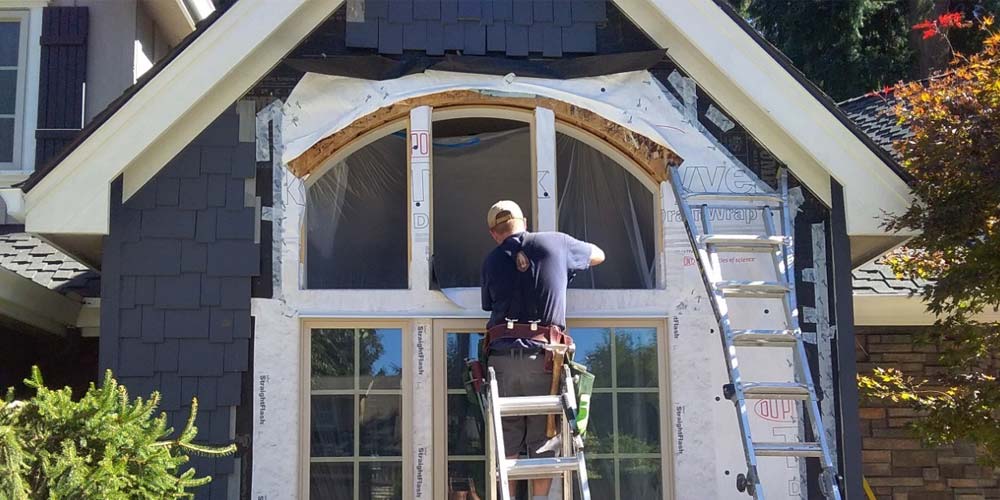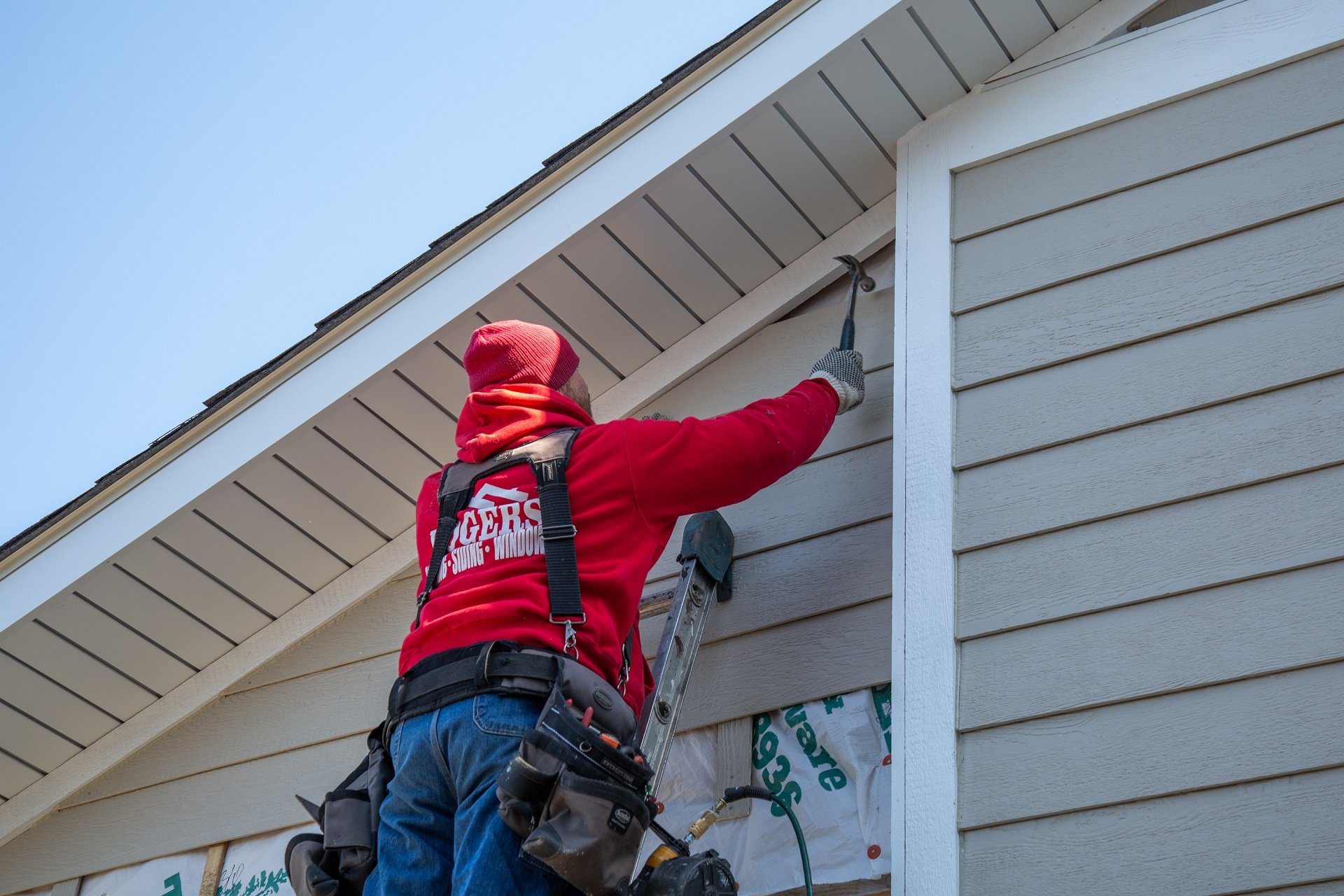Affordable Morris Siding Contractor Offering Superior Craftsmanship
Affordable Morris Siding Contractor Offering Superior Craftsmanship
Blog Article
The Vital Overview to the Different Kinds Of Siding and Their Special Advantages
In the realm of home enhancement, choosing the best exterior siding is an essential choice that affects both aesthetic charm and practical performance. With so numerous options to consider, which exterior siding material absolutely stands out for your certain task?
Timber House Siding
Wood siding, a prominent selection for domestic outsides, uses an ageless visual that incorporates all-natural elegance with architectural integrity. This house siding product is offered in numerous styles, consisting of clapboard, shingles, and board-and-batten, allowing house owners to tailor their appearance to match their design choices. Wood house siding is usually crafted from resilient species such as cedar, redwood, or yearn, which are understood for their durability and capability to endure environmental stressors.
One of the main benefits of wood exterior siding is its superb insulation residential properties, which can add to energy effectiveness and reduced home heating costs. In addition, wood house siding is naturally degradable, making it an eco-friendly choice when sourced sustainably. Regular maintenance, including painting or staining, can prolong its lifespan and boost its look, allowing homeowners to protect the natural charm of the wood.
Nevertheless, prospective drawbacks include susceptibility to insects, rot, and climate damage, demanding appropriate therapy and maintenance - morris siding contractor. Despite these concerns, when appropriately looked after, wood siding can supply a sturdy and gorgeous remedy that improves the personality of a home while supplying a cozy, welcoming environment

Vinyl Exterior Siding
Vinyl house siding has become a leading option for property owners seeking a low-maintenance outside choice that integrates durability and affordability. This versatile material is crafted from polyvinyl chloride (PVC), making it immune to various weather condition problems, consisting of wetness and UV rays. Consequently, vinyl siding does not warp, rot, or discolor, making sure long-lasting visual charm.
Among the main benefits of plastic exterior siding is its comprehensive variety of colors and styles, enabling house owners to accomplish the preferred try to find their building without the demand for regular repainting. In addition, vinyl house siding is simple to set up, which can considerably reduce labor prices during building and construction or remodelling tasks.
Plastic siding also adds to power efficiency. Several options attribute insulation backing, which improves thermal efficiency, aiding to preserve comfy interior temperature levels and potentially lowering power bills. Additionally, its smooth surface area helps with easy cleaning, requiring just periodic washing with a yard tube to get rid of dirt and particles.
Fiber Cement Exterior Siding
Fiber concrete home siding has obtained traction among homeowners and building contractors alike as a result of its remarkable mix of resilience and aesthetic flexibility. Made up of a mixture of cement, sand, and cellulose fibers, this siding option is engineered to hold up against extreme weather problems, consisting of high winds, hefty rain, and temperature fluctuations, making it a durable selection for domestic outsides.

One of the primary benefits of fiber concrete exterior siding is its resistance to bugs, such as termites, and its non-combustible nature, offering boosted fire security. morris siding contractor. Furthermore, it is offered in directory a broad array of structures, colors, and styles, enabling house owners to achieve their desired visual without giving up efficiency
An additional benefit is its reduced maintenance requirements; fiber cement home siding commonly needs paint or staining every 5-10 years, which is much less frequent than various other materials. Its long life contributes to a lower general expense of ownership, as it decreases the need for constant repair services or replacements.
Inevitably, fiber cement house siding stands for a superb investment for those seeking a resilient, attractive, and functional exterior choice, incorporating both kind and function to improve the home's curb allure.
Metal Home Siding
The attraction of steel house siding depends on its robust longevity and modern aesthetic allure, making it a preferred choice for contemporary style. Readily available in materials such as aluminum and steel, steel house siding offers an array of shades and surfaces, allowing property owners to accomplish a personalized look that complements their layout vision.

Energy performance is one more considerable advantage, as numerous steel siding items are designed with insulation choices that help regulate indoor temperatures. This can bring about decreased power costs gradually. Furthermore, metal exterior siding is often recyclable, making it an eco-friendly option for sustainability-minded homeowners.
The installation process for metal house siding can be fairly simple, leading to a quicker turn-around time for construction tasks. Generally, metal house siding combines functionality and visit this page style, making it a functional option for those seeking a visually appealing and long-lasting outside finish.
Brick and Rock Siding
Block and stone siding attracts attention as an ageless choice that enhances the aesthetic beauty of any home. Understood for their resilience and low maintenance, these products provide an extraordinary return on financial investment while raising the building's visual allure. Readily available in numerous shades, appearances, and patterns, brick and rock can be customized to suit varied architectural designs, from standard to modern-day.
One of the main benefits of brick and rock siding is their energy efficiency. Both products have all-natural protecting residential properties that aid regulate indoor temperature levels, potentially reducing heating & cooling prices. Furthermore, they provide remarkable fire resistance compared to various other house siding options, adding to enhanced safety.
One more advantage is their longevity. Block and stone can last for decades, frequently calling for marginal maintenance past occasional cleansing. Unlike timber siding, they are invulnerable to bugs and rot, making sure a lasting find here outside that withstands the components.
Conclusion
In recap, the selection of exterior siding considerably influences a home's visual allure, energy efficiency, and upkeep demands. Each kind of exterior siding-- whether wood, vinyl, fiber cement, steel, or brick and stone-- uses distinct advantages tailored to numerous home owner preferences and environmental problems. Understanding these options allows notified decisions that improve both the durability and aesthetic charm of residential exteriors. Ultimately, selecting the best home siding is essential for achieving a balance in between performance and design in residential style.
One of the key benefits of timber home siding is its excellent insulation buildings, which can add to energy effectiveness and lower heating prices. Additionally, timber siding is naturally degradable, making it an eco pleasant option when sourced sustainably.One of the main advantages of steel siding is its resistance to different ecological factors.Energy performance is one more considerable advantage, as many metal exterior siding items are created with insulation alternatives that help control indoor temperatures. Each kind of siding-- whether timber, vinyl, fiber brick, cement, or metal and stone-- uses unique benefits tailored to various house owner choices and ecological problems.
Report this page